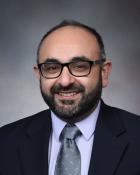Single Ventricle Defects
Overview
A single ventricle defect is a rare congenital heart defect that occurs when the lower chamber (ventricle) of the heart is underdeveloped. The chamber is usually smaller than average or missing a valve. Because the ventricle isn't developed, the other chamber has to work harder to keep the heart functioning and pump blood through the body.
Most single ventricle defects are diagnosed and treated during childhood. If the defect goes untreated, the heart can become overworked which may lead to serious complications. Some of these complications include heart failure, blood clots, stroke, seizures and buildup of fluid in the abdomen and lungs. Adults who have a single ventricle defect should regularly visit with a cardiologist who specializes in adults with congenital heart defects.
Types
There are many types of single ventricle defects. Some of these include:
Hypoplastic left heart syndrome — The left side of the heart is underdeveloped. The left ventricle and aorta are smaller than average and holes in the artery and septum do not close after birth.
Ebstein anomaly — The tricuspid valve is defected. The valve may be positioned improperly or have leaflets that don't completely open and close.
Pulmonary atresia with intact ventricular septum (PA/IVS) — The pulmonary valve does not develop. Blood from the right side of the heart cannot reach the lungs to receive oxygen.
Tricuspid atresia — The tricuspid valve is either missing or did not fully develop. Blood cannot flow from the right atrium to the right ventricle.
Symptoms
Most symptoms are apparent from childhood.
- Cyanosis, blue discoloration to the skin
- Fatigue
- Quick heartbeat
- Poor growth
- Rapid breathing
- Shortness of breath
Prevention
Single ventricle defects are present at birth and cannot be prevented.
Risk Factors
Most cases do not have any known risk factors. However, many individuals diagnosed with a single ventricle defect have other birth defects or a genetic disease.
Diagnosis
- Clinical examination. Your healthcare provider will look for signs of heart failure. Some signs include a quick heart rate, lethargy and rapid breathing. Your provider may also check for a weak pulse at different locations on the body and use a stethoscope to listen for abnormal heart sounds such as a heart murmur.
- Imaging tests. Your physician may order one of the following tests to look closer at the heart for a defect:
- Chest X-ray
- Echocardiogram — uses sound waves to create a picture of the heart
- Electrocardiogram — records electric activity of the heart
- Heart MRI
Treatment
Most surgeries are performed within the first few years of a child's life. As a child, you may have had the Norwood procedure, Glenn procedure or Fontan procedure to rebuild the heart. However, some adults may need additional surgeries in life if they experience uncontrolled arrhythmias or complications from a previous surgery. Speak with your provider about what type of surgical procedure you need if the defect causes problems in adulthood.
Follow-up Care
- You will need annual checkups with a cardiologist experienced in adults with congenial heart defects. Your cardiologist may order tests to continue to monitor your health.
- Your physician may prescribe you take daily medications to manage the condition.
- You may need to take antibiotics before any dental procedures to prevent infective endocarditis — a serious bacterial infection you are more susceptible to get if you have a heart defect.
- Depending on any complications of the defect, you may need to limit vigorous physical activity. Speak with your cardiologist about any activity limitations.







